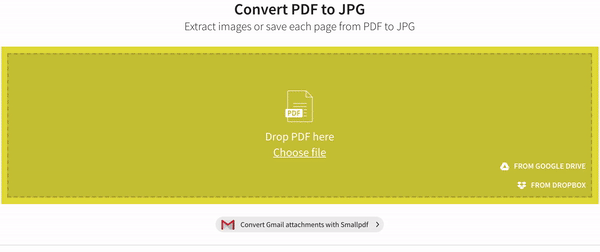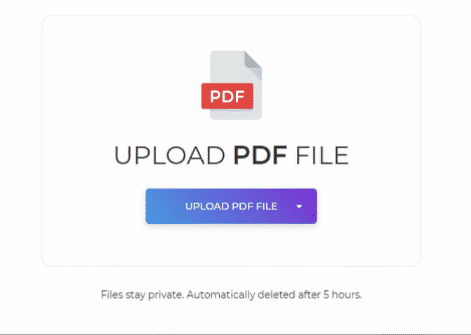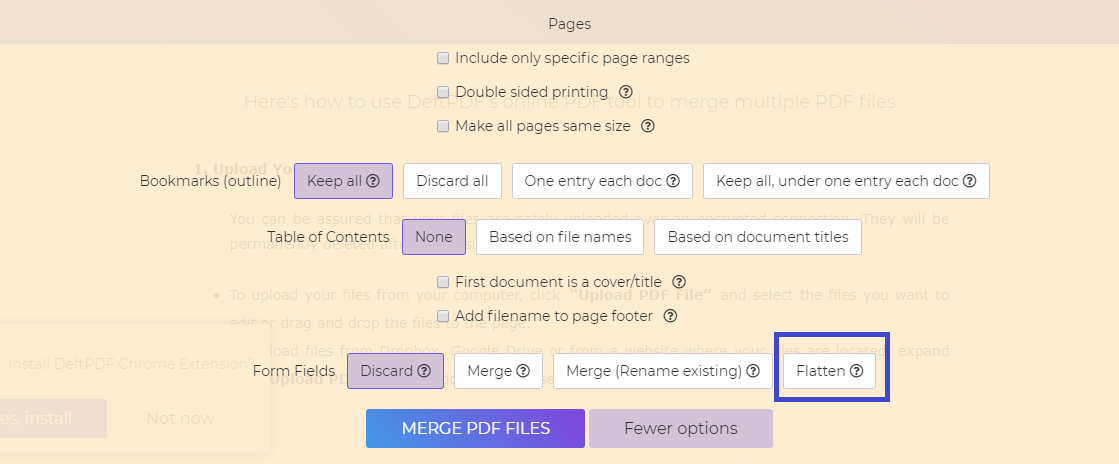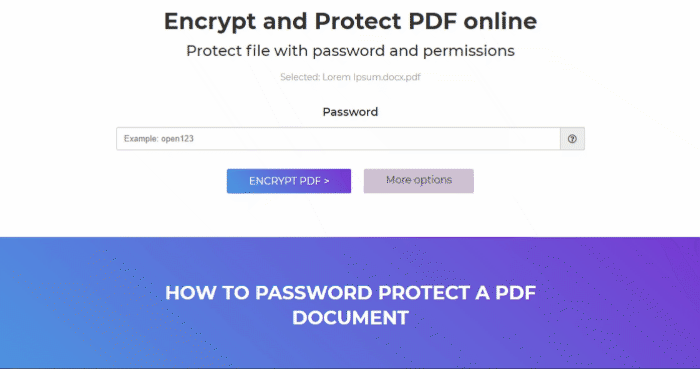Flattened pdf что это
How to Flatten a PDF for Free
September 13, 2019 by Hung Nguyen
Flatten your PDF in 2 simple clicks. No registration is needed to access our online PDF tools. And it’s free to use.
Filling and submitting forms online used to be a pain a decade back. You had to print a blank form out, enter all the information by hand, scan it, save it as a PDF or image, and then attach it to an online system or an email.
How to flatten a PDF file online for free
Upload the file, convert the entire page to a JPG.
On the next page, click ‘to PDF’.
Wait and download your file. This should flatten your PDF.
How to flatten a PDF in less than half a minute!
What does it mean to flatten PDF?
As I’ve stated, there are many interactive layers on a PDF document. By following the indicated procedure, you are essentially transferring the data presented on the PDF into a flat image. This process would also remove layers, as well as additional elements that would display once you trigger it, i.e., clicking on a drop-down list. All the details on the page become ‘integrated’ into one cohesive layer.
This ensures that your information cannot be changed, once viewed by another party. Flattening PDFs is essential when you are submitting forms, to guarantee that no one can accidentally adjust the data stored.
Reducing the size of a flattened PDF
Depending on the information stored on a document and what is not retained after you flatten it, the size may or may not drop considerably.
Either way, you can use our popular online compressor to reduce the size of the PDF after you flatten it. The process is pretty much the same. You upload it to the Compress PDF tool, pick the compression rate, and sit back, allowing Smallpdf to work its magic. This particular tool will extract and remove duplicate data from your PDF file for an even smaller document.
The ‘high quality’ option flatten the PDF and compress it in a way that maintains the formatting, as close to the original file as possible. The ‘strong compression’ rate should only be used when you are in dire need of reducing the file as much as possible, in size. For instance, some online platforms may have a size ceiling on PDF files.
What “Flatten PDF File” Means and How To Do It
If you’re new to the printing world, or even relatively acquainted, you may be wondering what a flattened PDF file is and how to achieve it. When you create a PDF from layered documents using software such as Adobe InDesign or Adobe Photoshop, your PDF can contain multiple layers with different content on each one. If you print your PDF as is, you will only print the layer that is visible onscreen as opposed to all visual elements from various layers. To avoid this issue, you want to flatten your PDF file for print. Flattening a PDF for print removes transparency information and converts images to a format that the printer can read.
Pro tip: Save a working version of your file as well as a PDF version that you can flatten.
Whether you are ordering color copies, business cards, brochure, or booklet printing, you will need to submit a flattened PDF.
Why PDF files are best for printing
A PDF (short for Portable Document Format) is the universally accepted and preferred file format for many print providers, Printivity included. A PDF can be set up to provide your printing company all of the information they need, such as color profile and embedded fonts, to ensure a smooth printing process. PDFs capture formatting information from a number of desktop publishing applications, allowing a consistent and unchanging view of what your file should look like from one device to the next.
For example, when you create a PDF, a copy of each font used is added into the PDF file itself. This is also known as embedding fonts. When the PDF is opened on any computer, all the fonts will be there the way you intended. In other file formats, the fonts are not embedded, meaning that if another computer does not have the fonts you used, it will not be able to find the fonts and will replace them with one they have. Other formats, such as DOC or DOCX, will apply styles and formatting based on the source and version of Word used to view the file. With a PDF, what you see is what you will get in your final printed product.
Once you have saved your final design file as a PDF, you want to make sure you flatten it before you submit it to your printer. You can easily flatten your PDF for print using Adobe Acrobat Pro by following these steps.
How to Flatten your PDF file with Adobe Acrobat
1. Create a backup of your PDF file
Creating a backup of your PDF file will ensure you can make edits if needed. Once you flatten your PDF, you cannot make any further edits.
2. Go to Advanced > Print Production > Flattener Preview
3. Adjust the Raster/Vector Balance as needed
The raster/vector setting determines how hard the flattener works to keep objects in their vector form in the flattened output. This setting can affect flattening performance, especially for complex documents. When it comes to complex documents, flattening in vector form requires more time and memory than rasterization.
You can adjust the raster/vector settings from 0-100.
When choosing setting 0, the flattener rasterizes all of the objects on any page that includes at least one transparent object. All of the objects on the page will be rasterized whether or not they contain or interact with transparency themselves.
Settings 1-99 will affect the degree to which the flattener rasterizes, or doesn’t, areas of transparency determined by the number of paths, objects, the amount of object overlap and the type of objects
At setting 100, the flattener tries to keep all of the objects in their original vector form. At this setting, the flattener will almost always produce the best looking output. Due to the complexity of keeping designs in vector form, this is the slowest setting.
Use the flattener preview to best determine what the flattener will do to your design.
4. Check “Convert All Text to Outlines”
This setting controls how text is processed and will cause the flattener to convert all text to outlines. With this setting enabled, all text will print with the same weight.
5. Deselect “Clip Complex Regions”*
*This step will only be applicable if you chose values 1-99 for step 3.
This setting controls the flattener’s analysis of complexity regions. When selected, this option creates clipping paths around these portions of a transparent design.
6. Click “Apply” to flatten the PDF and close the Flattener Preview box.
Once you have completed the steps above, your file will be one single element and ready to send to the printer.
Keep in mind that you cannot edit a PDF file after it has been flattened. It is important to create a backup file in case more edits are needed.
Printing with Printivity
Flattening any layers in your file is an essential step toward achieving a print ready file as Printivity, and any printer, will need to flatten your file before we can finish printing. Flattening your file before submitting it will help ensure a smooth printing process.
Please note that if you use a special font that our system can not recognize, the document will replace your font with another font in our system. We recommend that you save your final file as a flattened PDF to avoid this issue. We also accept file formats of DOC, JPEG, JPG, PNG, TIFF, AL, PSD, PUB, and PPT.
Download product specific templates directly from Printivity.com before you start designing. Once you’re ready to order, or have questions during the ordering process, contact our expert customer service department at 1-877-649-5463.
The DeftPDF Blog
How to Flatten a PDF Document
Other posts
How to Print 4 Pages Per Sheet in Adobe
How to Work Efficiently at Home
Infographic: Extracting PDF Pages in 3 Ways
What does it mean to flatten a PDF?
A fillable PDF means it could be an interactive PDF, meaning it was formatted in a way you can fill out and send back the file with your answers. PDF forms can have a variety of fillable elements such as checkboxes, text boxes, radio buttons, drop-down lists and even long text boxes that allow you to change values. Fillable forms can be used in different ways, such as government agency forms, surveys, polls, school requirements, company profiling, court needs and many more.
Though fillable and interactive PDF files are useful to everyday life and to companies, the downside of distributing an interactive PDF is the fact that the answers can be edited if it was only to be filled and saved then submitted. This could lead to a possible forgery and counterfeit. The good news is, you can flatten PDF files and teach your audience to flatten it as well to secure the answers.
When you flatten PDF files, it is the process of removing the ability to edit and add values on the document by separating form data and adding it as a text/image. Like regularly scanned documents, standard PDF files won’t be edited anymore by the receiver and the PDF file will no longer be interactive.
How do you flatten a PDF form?
Flattening a PDF means locking values in place when the form fields are completed and converted. The form will still look the same and can still be opened on different devices even after conversion but manipulation of information will be prevented. To do this, you simply need to save the PDF again as a different file. Here are the simple steps which can be done in any PDF reader like your browser or Adobe.
Step one: Open the fillable form using your browser
Step two: Complete the data needed to be encoded
Step three: Print the file but instead of pursuing it with a printer, change the device to save as PDF.
Step four: Specify the location where it will be downloaded
Step five: Select Save
Another way of doing this is to use DeftPDF, which is an online PDF converter. This online PDF tool will allow you to convert an interactive PDF file into a flat PDF and will also allow you to do more for editing or converting PDF for free. You can flatten your PDF in four simple steps:
Step one: Encode the necessary data on the fillable form and save
Step two: Open the website, DeftPDF.com and upload the file to the merge tool
Step three: Open more options. Click “flatten” from form fields
Step four: Save and download
Why do we need to flatten the fillable form?
Reason number one: flattening an interactive PDF for security. Information or annotations on a fillable form can be edited by the receiver and may result to falsified data. It can affect so many decisions if this happens, such as wrongful convictions due to false evidence, loss of marketing data, incomplete profile, or incorrect conclusions. Converting the data to become static makes data secure and accurate.
Reason number two: Other than securing information, flattening can simplify the file which therefore allows faster rendering. This will permit the receiver to open the file in any device without complications or delay in download.
Reason number three: In addition, this process can also solve printing issues. Sometimes, merging and flattening layers will allow a printer to read it clearly and therefore be able to print without any problems.
Though there are a lot of good reasons to flatten a PDF file, extraction and alterations won’t be allowed anymore and may possibly be seen as a disadvantage by some so if this is also not optional for you, you can also use another method to secure the file.
What’s another way can we do to secure data?
Additional protection using passwords can prevent unwanted readers from editing and viewing the PDF file. Adding permissions in certain levels to protect PDF such as editing is possible with the use of a PDF tool. In DeftPDF, achieving this is easy and free as long as you have an internet connection. You can do this by following the steps below:
Step one: Go to DeftPDF.com and open the Protect tool
Step two: Upload your file
Step three: Edit the Options by adding a password for editing
Step four: Save and download the new protected PDF file
In this easy and accessible online world, information can be stolen and changed in an instant. Protecting and securing yourself with these simple procedures and conversions will make a big difference in making your life less vulnerable. All we ever need to do is remember to do it and get some knowledge to know how!
Transparency flattening (Acrobat Pro)
某些 Creative Cloud 应用程序、服务和功能在中国不可用。
About flattening
If your document or artwork contains transparency, to be output it usually needs to undergo a process called flattening. Flattening divides transparent artwork into vector-based areas and rasterized areas. As artwork becomes more complex (mixing images, vectors, type, spot colors, overprinting, and so on), so does the flattening and its results.
Flattening may be necessary when you print or when you save or export to other formats that don’t support transparency. To retain transparency without flattening when you create PDF files, save your file as Adobe PDF 1.4 (Acrobat 5.0) or later.
You can specify flattening settings and then save and apply them as transparency flattener presets. Transparent objects are flattened according to the settings in the selected flattener preset.
Transparency flattening cannot be undone after the file is saved.
For more information on transparency output issues, see the Print Service Provider Resources page of the Adobe Solutions Network (ASN) (English only), available on the Adobe website.
Flattener Preview dialog box overview
Use the preview options in the Flattener Preview dialog box to highlight the areas and objects that are transparent, as well as those affected by transparency flattening. Transparent content is highlighted in red, and the rest of the artwork appears in grayscale.
Use this information to adjust the flattener options before you apply the settings, and then save them as flattener presets. You can then apply these presets from other dialog boxes. For example, PDF Optimizer (Save As Other > Optimized PDF ), Advanced Print Setup dialog box, and the PostScript Settings dialog box (File > Export To ).
Open the Flattener Preview dialog box
Preview which areas of artwork will be flattened
Use the preview options in the Flattener Preview to highlight areas that are affected by flattening. You can use this color-coded information to adjust flattening options.
The Flattener Preview is not intended for precise previewing of spot colors, overprints, and blending modes. Instead, use Overprint Preview mode for those purposes.
In Illustrator, choose Window > Flattener Preview.
In Acrobat, choose Tools > Print Production > Flattener Preview.
In InDesign, choose Window > Output > Flattener Preview.
(Illustrator) If the flattening settings aren’t visible, select Show Options from the panel menu to display them.
In Illustrator and Acrobat, to magnify the preview, click in the preview area. To zoom out, Alt-click/Option-click in the preview area. To pan the preview, hold down the spacebar and drag in the preview area.
Transparency Flattener options
You can set Transparency Flattener options when creating, editing, or previewing flattener presets in Illustrator, InDesign, or Acrobat.
Highlight (preview) options
None (Color Preview)
Rasterized Complex Regions
Highlights the areas that will be rasterized for performance reasons (as determined by the Rasters/Vectors slider). Keep in mind that the boundary of the highlight area has a higher probability of producing stitching problems (depending on the print-driver settings and the rasterization resolution). To minimize stitching problems, select Clip Complex Regions.
Highlights the objects that are sources of transparency, such as objects with partial opacity (including images with alpha channels), objects with blending modes, and objects with opacity masks. In addition, note that styles and effects may contain transparency, and overprinted objects may be treated as sources of transparency if they are involved in transparency or if the overprint needs to be flattened.
All Affected Objects
Highlights all objects that are involved in transparency, including transparent objects and objects that are overlapped by transparent objects. The highlighted objects will be affected by the flattening process—their strokes or patterns will be expanded, portions of them may get rasterized, and so on.
Affected Linked EPS Files (Illustrator only)
Highlights all linked EPS files that are affected by transparency.
Affected Graphics (InDesign only)
Highlights all placed content affected by transparency or transparency effects. This option is useful for service providers who need to see graphics that require attention to print properly.
Expanded Patterns (Illustrator and Acrobat)
Highlights all patterns that will be expanded if involved in transparency.
Highlights all strokes that will be outlined if involved in transparency or because Convert All Strokes To Outlines is selected.
Outlined Text (Illustrator and InDesign)
Highlights all text that will be outlined if involved in transparency or because Convert All Text To Outlines is selected.
In the final output, outlined strokes and text may appear slightly different from native ones, especially very thin strokes and very small text. However, the Flattener Preview doesn’t highlight this altered appearance.
Raster-Fill Text And Strokes (InDesign only)
Highlights text and strokes that have rasterized fills as a result of flattening.
All Rasterized Regions (Illustrator and InDesign)
Highlights objects and intersections of objects that will be rasterized because there is no other way of representing them in PostScript or because they are more complex than the threshold specified by the Rasters/Vectors slider. For example, the intersection of two transparent gradients will always be rasterized, even if the Rasters/Vectors value is 100. The All Rasterized Regions option also shows raster graphics (such as Photoshop files) involved in transparency, and raster effects such as drop shadows and feathers. Note that this option takes longer to process than the others.
Transparency Flattener Preset options
Specifies the name of the preset. Depending on the dialog box, you can type a name in the Name text box or accept the default. You can enter the name of an existing preset to edit that preset. However, you can’t edit the default presets.
Specifies the amount of vector information that will be preserved. Higher settings preserve more vector objects, while lower settings rasterize more vector objects; intermediate settings preserve simple areas in vector form and rasterize complex ones. Select the lowest setting to rasterize all the artwork.
The amount of rasterization that occurs depends on the complexity of the page and the types of overlapping objects.
Line Art And Text Resolution
Rasterizes all objects, including images, vector artwork, text, and gradients, to the specified resolution. Acrobat and InDesign allow a maximum of 9600 pixels per inch (ppi) for line art, and 1200 ppi for gradient mesh. Illustrator allows a maximum of 9600 ppi for both line art and gradient mesh. The resolution affects the precision of intersections when flattened. Line Art and Text Resolution should generally be set to 600‑1200 to provide high-quality rasterization, especially on serif or small point sized type.
Gradient And Mesh Resolution
Specifies the resolution for gradients and Illustrator mesh objects rasterized as a result of flattening, from 72 to 2400 ppi. The resolution affects the precision of intersections when flattened. Gradient and mesh resolution should generally be set between 150 and 300 ppi, because the quality of the gradients, drop shadows, and feathers do not improve with higher resolutions, but printing time and file size increase.
Convert All Text To Outlines
Converts all type objects (point type, area type, and path type) to outlines and discards all type glyph information on pages containing transparency. This option ensures that the width of text stays consistent during flattening. Note that enabling this option will cause small fonts to appear slightly thicker when viewed in Acrobat or printed on low-resolution desktop printers. It doesn’t affect the quality of the type printed on high-resolution printers or imagesetters.
Convert All Strokes To Outlines
Converts all strokes to simple filled paths on pages containing transparency. This option ensures that the width of strokes stays consistent during flattening. Note that enabling this option causes thin strokes to appear slightly thicker and may degrade flattening performance.
Clip Complex Regions
Ensures that the boundaries between vector artwork and rasterized artwork fall along object paths. This option reduces stitching artifacts that result when part of an object is rasterized while another part of the object remains in vector form. However, selecting this option may result in paths that are too complex for the printer to handle.
Some print drivers process raster and vector art differently, sometimes resulting in color stitching. You may be able to minimize stitching problems by disabling some print-driver specific color-management settings. These settings vary with each printer, so see the documentation that came with your printer for details.
(Illustrator only) Select Preserve Alpha Transparency (Flatten Transparency dialog box only)
Preserves the overall opacity of flattened objects. With this option, blending modes and overprints are lost, but their appearance is retained within the processed artwork, along with the level of alpha transparency (as when you rasterize artwork using a transparent background). Preserve Alpha Transparency can be useful if you are exporting to SWF or SVG, since both of these formats support alpha transparency.
(Illustrator only) Select Preserve Spot Colors And Overprints (Flatten Transparency dialog box only)
Generally preserves spot colors. It also preserves overprinting for objects that aren’t involved in transparency. Select this option when printing separations if the document contains spot colors and overprinted objects. Deselect this option when saving files for use in page-layout applications. With this option selected, overprinted areas that interact with transparency are flattened, while overprinting in other areas is preserved. The results are unpredictable when the file is output from a page-layout application.
Preserve Overprint (Acrobat only)
Blends the color of transparent artwork with the background color to create an overprint effect.
About transparency flattener presets
If you regularly print or export documents that contain transparency, you can automate the flattening process by saving flattening settings in a transparency flattener preset. You can then apply these settings for print output as well as for saving and exporting files to PDF 1.3 (Acrobat 4.0) and EPS and PostScript formats. In addition, in Illustrator you can apply them when saving files to earlier versions of Illustrator or when copying to the clipboard; in Acrobat, you can also apply them when optimizing PDFs.
These settings also control how flattening occurs when you export to formats that don’t support transparency.
You can choose a flattener preset in the Advanced panel of the Print dialog box or of the format-specific dialog box that appears after the initial Export or Save As dialog box. You can create your own flattener presets or choose from the default options provided with the software. The settings of each of these defaults are designed to match the quality and speed of the flattening with an appropriate resolution for rasterized transparent areas, depending on the document’s intended use:
is for final press output and for high-quality proofs, such as separations-based color proofs.
is for desktop proofs and print-on-demand documents that will be printed on PostScript color printers.
is for quick proofs that will be printed on black-and-white desktop printers and for documents that will be published on the web or exported to SVG.
Create a flattener preset
Flattener presets are stored in the same location as printer settings files:
\Documents and Settings\[current user]\ Application Data \Adobe\Acrobat\10.0\Preferences











